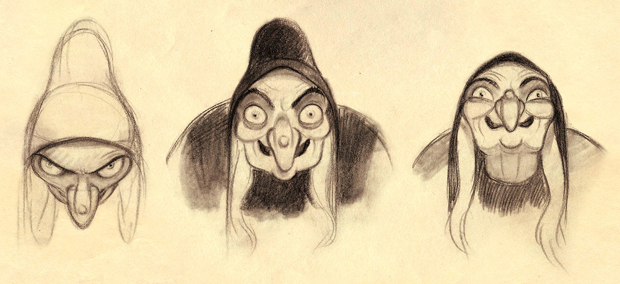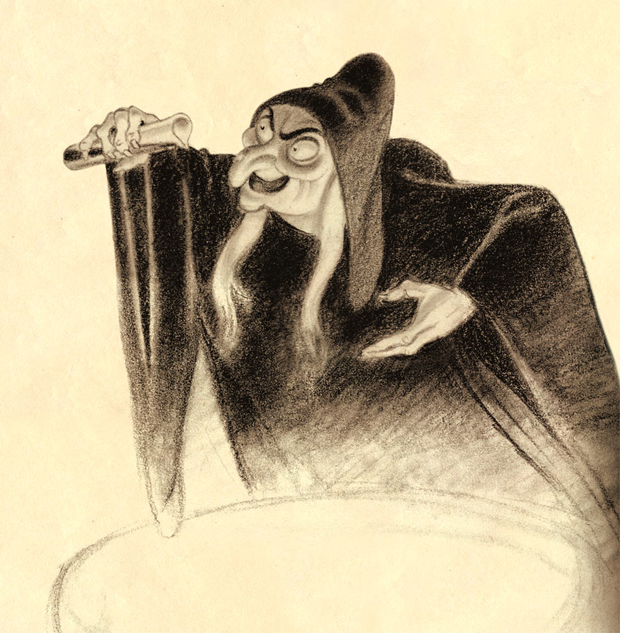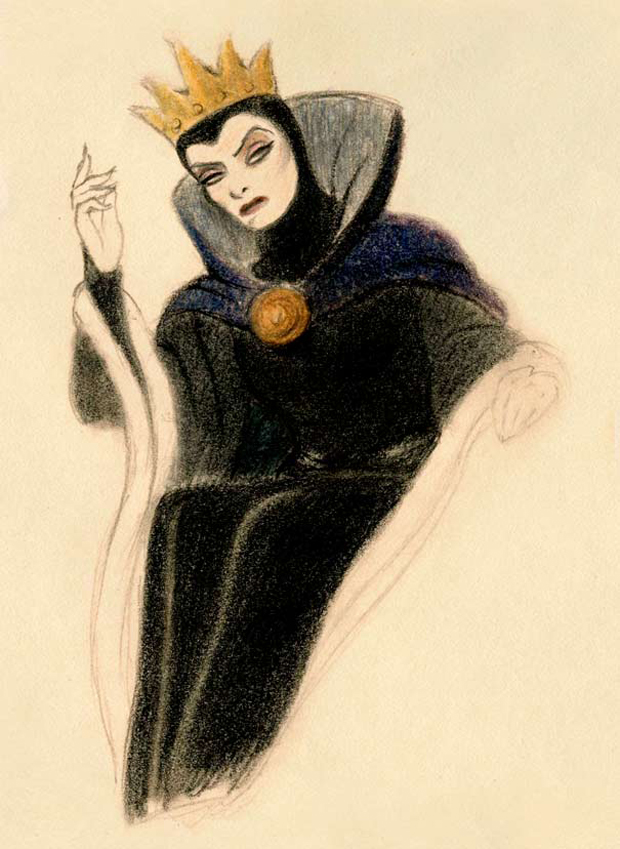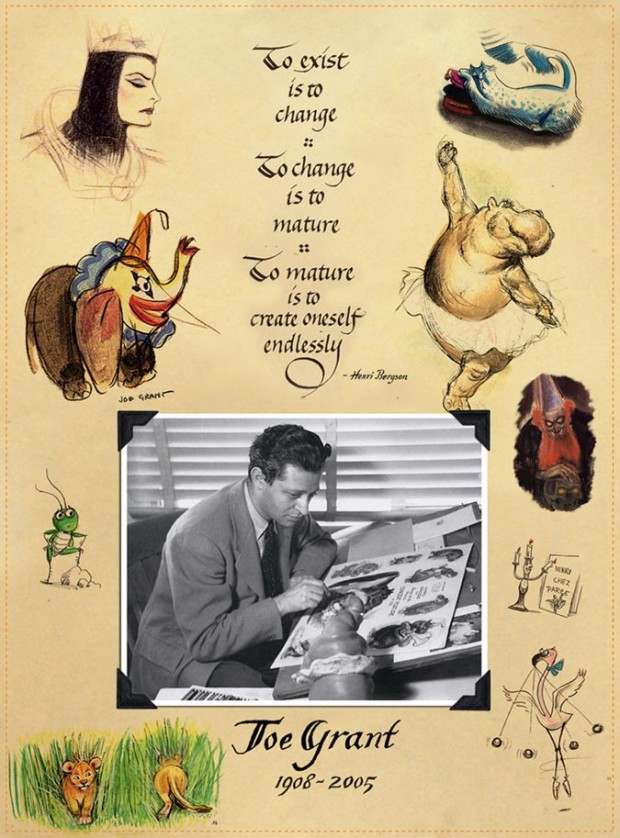In an industry noted for producing “legends,” Joe Grant is in the A-list of legends. Joe got his start working as a print cartoonist for the now-defunct newspaper the Los Angeles Record. Some of Joe’s caricatures were spotted by Walt Disney, who promptly hired Joe to create movie star caricatures for the cartoons Parade of the Award Nominees (1932) and Mickey’s Gala Premiere (1933). From that point on, Joe was a Disney staffer, moving into character design and story work for the classics Snow White and the Seven Dwarfs, Dumbo, and Fantasia. He left the studio in the early 1950s for what he described as “something of an adventure in my field,” which was devising a process for putting photographs onto ceramics, and running the resultant ceramics company out of his home. Abandoning that after a while, Joe started designing greeting cards.
When I spoke with Joe in 1995, he was back from retirement and back at the Disney Studios, more than sixty years after he began with the company. That came about, he told me, after having lunch with veteran director Jack Kinney, during which he started talking shop:
“After the lunch and a lot of spieling of pent-up ideas over the years cartoon-wise, they decided to hire me. I questioned my wife on it and she said, ‘I think you’d better go back to work.’ I don’t really know what that meant, but that led me to Disney’s again.”



But what, exactly, did Joe do? Was he a story man again? A gag man, perhaps? “My function is somewhat nebulous,” he told me, with a chuckle, then explained:
“It’s just gadflying around. You drop in here and drop in there, and if you’ve got an idea, you make a couple thousand copies and pass them around, or else they don’t soak in. Whatever it is it’s something that is on the spur of the moment, or something you think of while driving in. You boldly go in and say, ‘Here’s a thought,’ and sometimes they say that’s great, and sometimes they give you a blank stare. As far as the young ones are concerned, they seem very respectful. The trouble with me is, when I’m speaking or being interviewed, or talk to them, I have to be careful of the decade of which I’m speaking, because once I get into the 1930s, I’ve lost my audience.”
I suspect Joe was being too modest, since I can’t imagine that the younger artists who worked with him on Beauty and the Beast, Aladdin, Mulan, and up to the 2004 short Lorenzo, would be anything but rapt in his stories about the studio in the old days. Interestingly, Joe told me that the primary difference between the Disney of the Golden era and the Disney of the 1990s was size:
“It’s pretty much the same when you get down to the core of it. The same enthusiasm, the same problems, the same complaints [laugh]. After all, I guess I am a Disney man.”
The legendary Joe Grant passed away in 2005, just before his 97th birthday. He was a Disney man to the end.




 Win a Funko X Lilo & Stitch Prize Pack!
Win a Funko X Lilo & Stitch Prize Pack!

